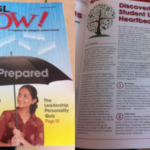In the process of putting together the 2008 APCA Advisors’ Institute tech keynote, I came across this slide from the 2007 keynote. The simplicity is probably because I made it late at night, but in the light of day, and one year later, I love this unequivocal explanation of Swift Kick:
The implementation order of this simple summary is what makes business “strategy”. Before I get into the strategy for 2008, it’s worth a review of our choices and steps thus far.
In late 2005, we set out with a general direction – to improve education. We focused on the first tactic “Increase Engagement”, starting with higher education. To increase engagement, we directed ourselves primarily towards relationships and the research around social capital, picking Leadership Training as the first product and focusing on creating a community for both marketing and research purposes.
Engagement, leadership, and community building at colleges were all in the domain of Student Affairs, so we set out to build relationships and a brand within this segment. We did this as “Swift Kick” instead of “Kevin” and “Tom” so that the company could get bigger than we were. We were interested in a sustainable platform to reach the goals – it is very likely that someone else will be better at managing this platform. Might as well get out of the way at the beginning.
In 2006, we invested heavily in developing technology to support and assess both the leadership training and community development as we rolled out Dance Floor Theory™ at APCA and NACA.
In Q4 of 2006, it made sense to add a technology lecture to the Dance Floor Theory™ leadership training, as this was expertise we were maintaining and growing anyways and it was also a differentiating position for us on the college speaking circuit.
At the beginning of 2007, we partnered with APCA to use their conferences as a shared laboratory where we could test our theories and technology and learn about technology powered community development (and APCA can play with the future of conferences).
Throughout 2007 The marketing push was split roughly 70/30 tech lecture** to Dance Floor Theory™, for a couple of reasons.
- “Leadership” is a crowded and fluff-filled space in college speaking while we have a chance to become the “tech experts”
- Technology lectures are great research, development, and marketing segue into Red Rover and eventually the packaged solutions we are working towards in 2008.
Leaving DFT mostly behind as a lecture is sad to me, I’m very attached to DFT – and I love presenting it for student leaders. This strategic shift also meant NOT finishing the DFT book in 2007, which has been a personal goal for a long time. In the end, though, this is what strategy is all about: prioritizing. To reach the bigger goals outlined in the image above, it will be more effective to build software that operates like Dance Floor Theory™ than to train individuals.
With a software product, the philosophy and effect are scalable. With a speaking/training service, we are necessarily limited by our time, not to mention the desire to maintain relationships at home.
The software also addresses the “prove it” goal. It is very difficult to measure the effects of one lecture on a school, but the software will throw off piles of data to work with.
This is why 2007 became the year of Red Rover. Starting Feb. 1, 2007, this project started eating up the lion’s share of our time and money. It was a long-term bet in service of the bigger goals of Swift Kick.
We are now in a decent position with two popular lectures generating decent revenue, an early-stage software product, deep domain knowledge across student affairs, leadership, and student-centered technologies, a strong brand and many relationships in our focus area, and a pile of tools, tips, and techniques for student affairs.
2008 will be about the integration of all of these pieces, and that will be another blog : )




